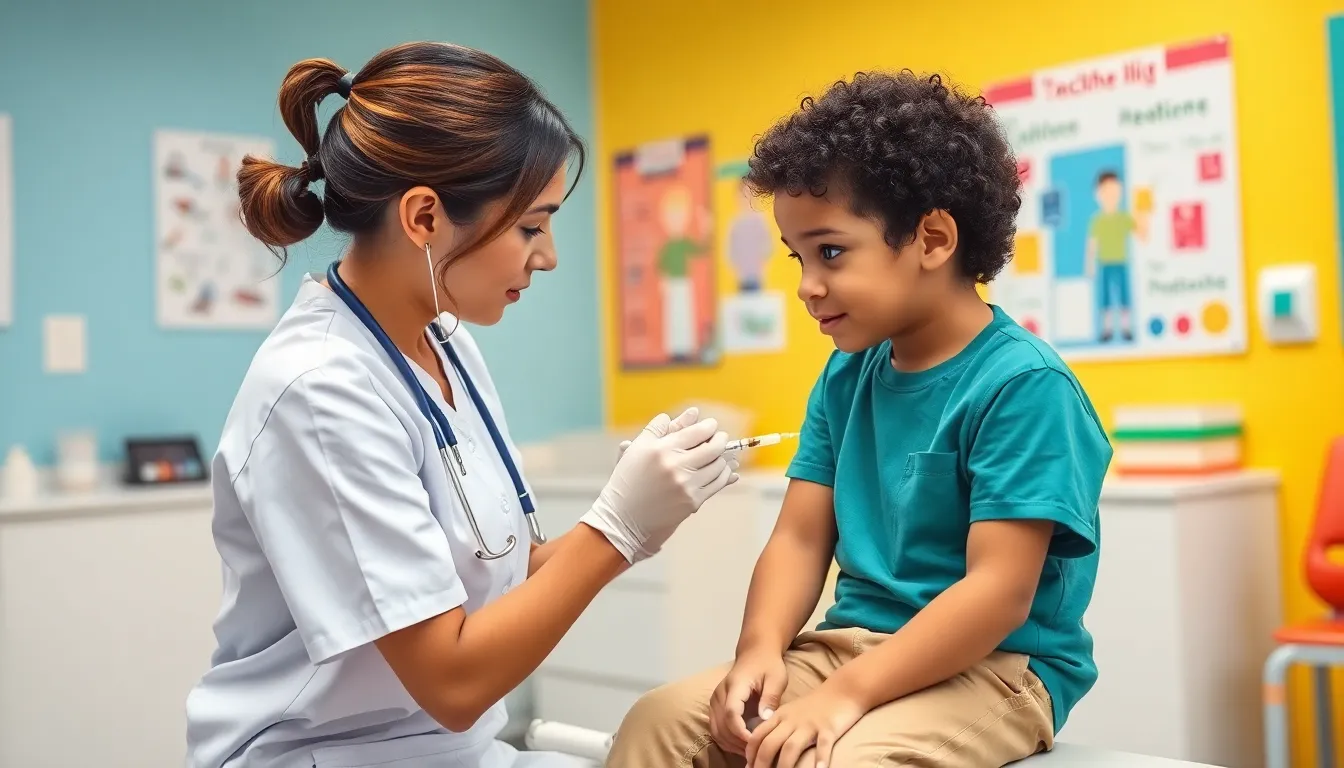Cancer screening plays a crucial role in early detection and improving survival rates. By identifying cancer at its earliest stages, individuals can access timely treatment options, increasing their chances of successful outcomes. With various screening methods available, from mammograms to colonoscopies, understanding the importance of these tests is essential for maintaining health.
As awareness around cancer screening grows, so does the need for accurate information. Many people still have questions about when to start screenings, which tests are necessary, and how often they should be done. This article aims to clarify these aspects, empowering readers to make informed decisions about their health and well-being.
Table of Contents
ToggleOverview of Cancer Screening
Cancer screening refers to the systematic testing of individuals for cancer before symptoms appear. Early detection significantly enhances treatment effectiveness and may lead to better survival rates. Common screening methods include:
- Mammograms: X-ray examinations of breast tissue, recommended annually for women starting at age 40.
- Colonoscopies: Visual examinations of the colon, suggested every 10 years for individuals aged 45 and older.
- Pap Tests: Screening for cervical cancer in women, advised every three years starting at age 21.
- Prostate-Specific Antigen (PSA) Tests: Blood tests for prostate cancer, typically discussed with men at age 50 or younger for high-risk individuals.
Understanding when to begin screenings and how often to undergo them is crucial for effective health management. Guidelines may vary based on personal and family medical histories, indicating a need for informed discussions with healthcare professionals.
Regular cancer screenings contribute to lower cancer mortality rates and empower individuals to take proactive steps in their health journeys. Staying updated on recent advancements in screening technology helps in making well-informed health decisions.
Importance of Early Detection

Early detection of cancer significantly improves treatment options and increases survival rates. Identifying cancer in its initial stages enables timely intervention, potentially leading to better outcomes.
Benefits of Cancer Screening
- Increased Survival Rates: Early detection often results in higher survival rates due to more effective treatment choices.
- Less Aggressive Treatment: Screened cancers typically require less intensive treatment, minimizing side effects and recovery time.
- Access to Advanced Therapies: Early identification allows access to newer and more effective therapies, improving prognoses.
- Regular Monitoring: Screenings facilitate routine health check-ups, encouraging overall awareness of personal health status.
- Education and Awareness: Screening processes often educate individuals about cancer risks, promoting proactive health behaviors.
Risks and Limitations
- False Positives: Screening may yield false positives, leading to unnecessary stress and additional testing.
- Overdiagnosis: Some screenings detect cancers that may not progress, resulting in overtreatment and associated risks.
- Invasive Procedures: Certain screening methods involve invasive techniques, carrying inherent risks.
- Cost Considerations: Some individuals may face financial burdens due to the costs associated with screenings not covered by insurance.
- Emotional Impact: The anxiety around screening results can affect mental health, requiring support systems for individuals.
Types of Cancer Screening Tests
Various cancer screening tests exist to identify potential cancers before symptoms arise. Understanding these tests facilitates informed health decisions and encourages timely medical care.
Imaging Tests
Imaging tests use advanced technology to visualize internal body structures. Common imaging tests include:
- Mammograms: X-ray images of the breasts detect early signs of breast cancer. Annual mammograms are recommended for women starting at age 40.
- CT Scans: Computed tomography scans provide cross-sectional images of the body. They are useful for detecting tumors in organs such as the lungs, liver, and pancreas.
- MRI: Magnetic resonance imaging uses magnetic fields to create detailed images. It is often utilized for brain, spinal cord, and prostate cancer screenings.
- Ultrasound: Sound waves produce real-time images of organs. Ultrasound is frequently used to investigate breast lumps and assess the liver or kidneys.
Blood Tests
Blood tests analyze specific biomarkers or substances in the bloodstream. Notable blood tests include:
- PSA Test: This measures prostate-specific antigen levels for prostate cancer detection. Elevated PSA levels can indicate the potential presence of cancer.
- CA-125 Test: Used primarily for ovarian cancer screening, this test assesses CA-125 protein levels, which may rise in the presence of ovarian cancer.
- Complete Blood Count (CBC): A CBC detects abnormalities in blood cell counts, potentially indicating leukemia or other cancers.
- Circulating Tumor DNA (ctDNA) Tests: These tests detect small fragments of cancer DNA shed into the bloodstream, offering insights into specific tumor characteristics.
Biopsies
- Needle Biopsy: A thin needle collects tissue from a suspicious area. This method is minimally invasive and often used for breast, lung, or prostate cancers.
- Endoscopic Biopsy: An endoscope retrieves tissue samples from internal organs, such as the gastrointestinal tract. This approach is frequently employed for esophageal, stomach, or colon cancer assessment.
- Surgical Biopsy: A surgical procedure removes a larger tissue sample or an entire tumor for analysis. This method provides comprehensive information for treatment planning and cancer staging.
- Fine Needle Aspiration (FNA): A fine needle aspirates cells or fluid from a lump or mass. It is commonly used for thyroid and lymph node evaluations.
Recommended Screening Guidelines
Understanding recommended screening guidelines is crucial for early cancer detection. These guidelines vary based on age, gender, and individual risk factors.
Age and Risk Factors
Age and personal risk factors significantly influence cancer screening recommendations.
- Women aged 40-49: Annual mammograms recommended for breast cancer screening based on risk factors. Women at higher risk may begin screenings earlier.
- Women aged 50-74: Annual or biennial mammograms advised, with continued screening based on overall health and personal preference.
- Men aged 50 and older: PSA tests for prostate cancer screening suggested. High-risk individuals should start at age 45.
- Individuals with family histories: Regular screenings initiated earlier than standard guidelines. Discussions with healthcare providers help establish personalized screening timelines.
Different Types of Cancer
Various cancers require specific screening tests to optimize early detection.
- Breast Cancer: Mammograms facilitate early diagnosis. Clinical breast exams or self-exams can complement imaging.
- Cervical Cancer: Pap tests and HPV tests recommended for women starting at age 21, with intervals based on age and test type.
- Colorectal Cancer: Colonoscopies suggested beginning at age 45, with options for stool tests like FIT or Cologuard based on individual risk.
- Lung Cancer: Low-dose CT scans recommended for high-risk individuals ages 50-80 with a significant smoking history.
- Prostate Cancer: PSA tests used for screening men over 50. High-risk groups should initiate discussions at age 45.
- Ovarian Cancer: No standard screening exists; however, symptom awareness and genetic counseling are crucial for high-risk women.
By adhering to these guidelines, individuals can engage in proactive health management, significantly enhancing early detection efforts.
Cancer screening plays a crucial role in the journey toward better health and increased survival rates. By prioritizing regular screenings individuals empower themselves to detect potential issues early and access effective treatments. Understanding the various screening methods and adhering to recommended guidelines can significantly impact health outcomes.
It’s essential for individuals to engage in open conversations with healthcare professionals about their personal risk factors and the appropriate screenings for their needs. Staying informed about advancements in screening technology and updated guidelines ensures individuals remain proactive in their health management. Ultimately, embracing cancer screening is a vital step toward a healthier future.




